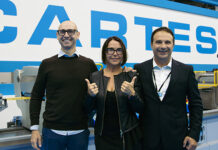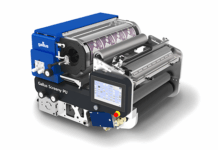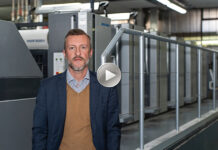Last June, the Ministry of the Environment and Energy Security and Comieco organized the conference “Economic, environmental and territorial benefits of paper and cardboard flagship projects: the boost of the PNRR”, in presence and live streaming from the Chamber of Deputies. 128 million euros will come from the PNRR for 70 projects for paper and cardboard sector.
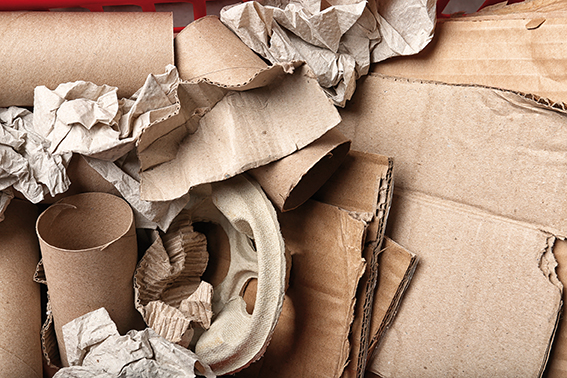
Upgrading and modernization of the existing plant engineering, increase in cellulosic waste treatment capacity with consequent benefits for the environment, the territory and Italian employment: these will be the main results of the 70 projects of paper sector financed by the PNRR. The advantages, focus of a study promoted by Comieco and the Ministry of the Environment and Energy Security and carried out by Nomisma, were presented at the Chamber of Deputies in the presence of institutional representatives and the business world. 64% concerns the Central-Southern area of the country, 36% Northern Italy.
The projects: implementation of plant structures for a renewed recycling capacity
Thanks to the PNRR, 128 million euros will be added to the investments envisaged by the paper sector, for a total of over 466 million euros, with a significant contribution in terms of modernization and implementation of new structures. In fact, funding is envisaged for 46 projects relating to paper waste treatment plants (22 new and 24 improvement and expansion projects); 22 paper mill improvement and expansion projects (2 new plants and 20 improvement and expansion projects); 2 new projects for the final treatment of pulp waste.
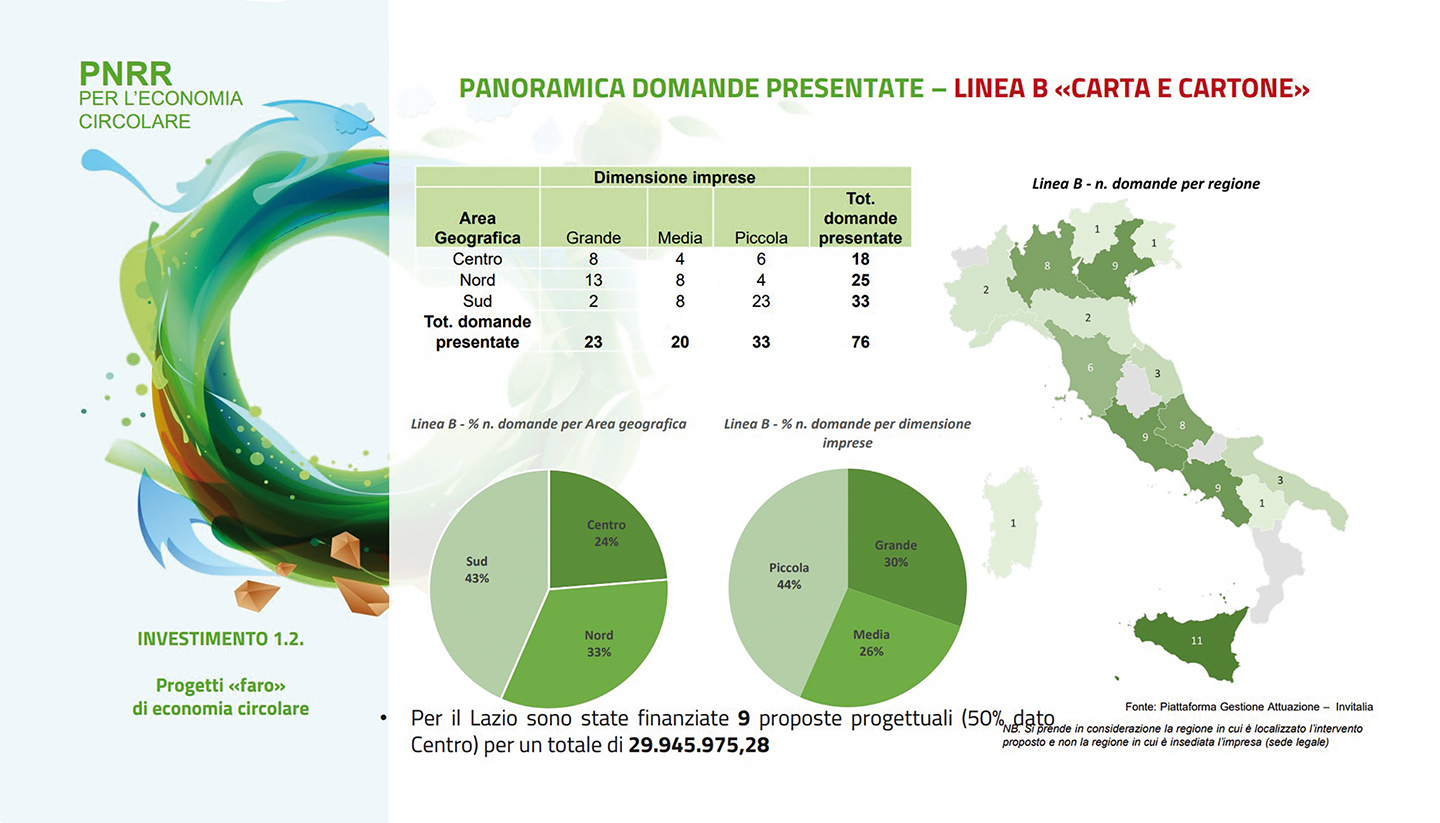
In fact, the 46 paper waste treatment plants will have a total treatment capacity of 1.3 million tons of paper waste from separate collection, of which 524,000 tons in the South, 412,000 tons in the Center and 367,000 tons in the North.
The projects are divided between 25 structures in Northern Italy, 18 in Central and 27 in Southern Italy with the aim of reducing the infrastructural gap between the North and Central-South of the country, areas further behind in terms of separate waste collection and recycling. Thanks to investments in paper waste treatment plants, the Nomisma study estimates an increase in the treatment capacity of the supply chain of over 700,000 tons of paper and cardboard which, added to the increase in the production capacity of the paper mills, will allow for an improvement in the quality of the recovered paper and manage higher volumes of separate waste collection.
“The design proposals presented by the paper and cardboard sector received very high scores in terms of technological innovation, through the projects presented and eligible for funding, most of them in the Centre-South of the country, were implemented in significantly industrial symbiosis and circular districts, in line with the objectives of the PNRR”, commented Laura D’Aprile, Head of the Sustainable Development Department of MASE.
From internal consumption to related industries, the economic and employment benefits
“A development which, in addition to bringing territorial and environmental benefits thanks to greater energy efficiency and consequent reduction of CO2 emissions, will produce economic advantages by also creating the conditions for increasing jobs; the results will be encouraging because the investment capacity of the companies involved will be increased by 21% per year for the next ten years (+18% for paper mills and +24% for paper waste treatment plants). Taking into account that between 2013 and 2021 employment in paper mills and paper waste treatment plants increased by 2.5% per year, thanks to PNRR investments the rate will stand at 3.5% until 2026”, commented Giulio Santagata, Senior Advisor of Nomisma.
“Nomisma’s analysis confirms that the paper and cardboard projects can be a driving force to further increase the separate collection of paper and cardboard in Italy: it is estimated that around 830,000 tonnes still end up in landfills, 440,000 of which in the South. If they were intercepted, our country could soon exceed the EU target of 85% recycling rate for cellulosic packaging set for 2030”, explains Carlo Montalbetti, General Manager of Comieco.
Most of the projects for the paper mills concern the expansion and modernization of existing plants are located in the North and in the Centre, where the production capacity is concentrated. These investments, in addition to strengthening the industrial sector of paper mills, represent the prerequisite for the growth of paper waste treatment plants. The implementation and upgrading of paper waste treatment plants, mostly concentrated in the South, are enabling conditions for the growth of separate paper and cardboard collection. The conditions will therefore be created for a greater supply of waste paper from national separate collection, which represents the secondary raw material for the increase in the production of paper and cardboard for packaging. Furthermore, the greater production of paper and cardboard for packaging will find space in the Italian market, intercepting the domestic demand for paper and cardboard reducing consequently dependence on foreign countries.
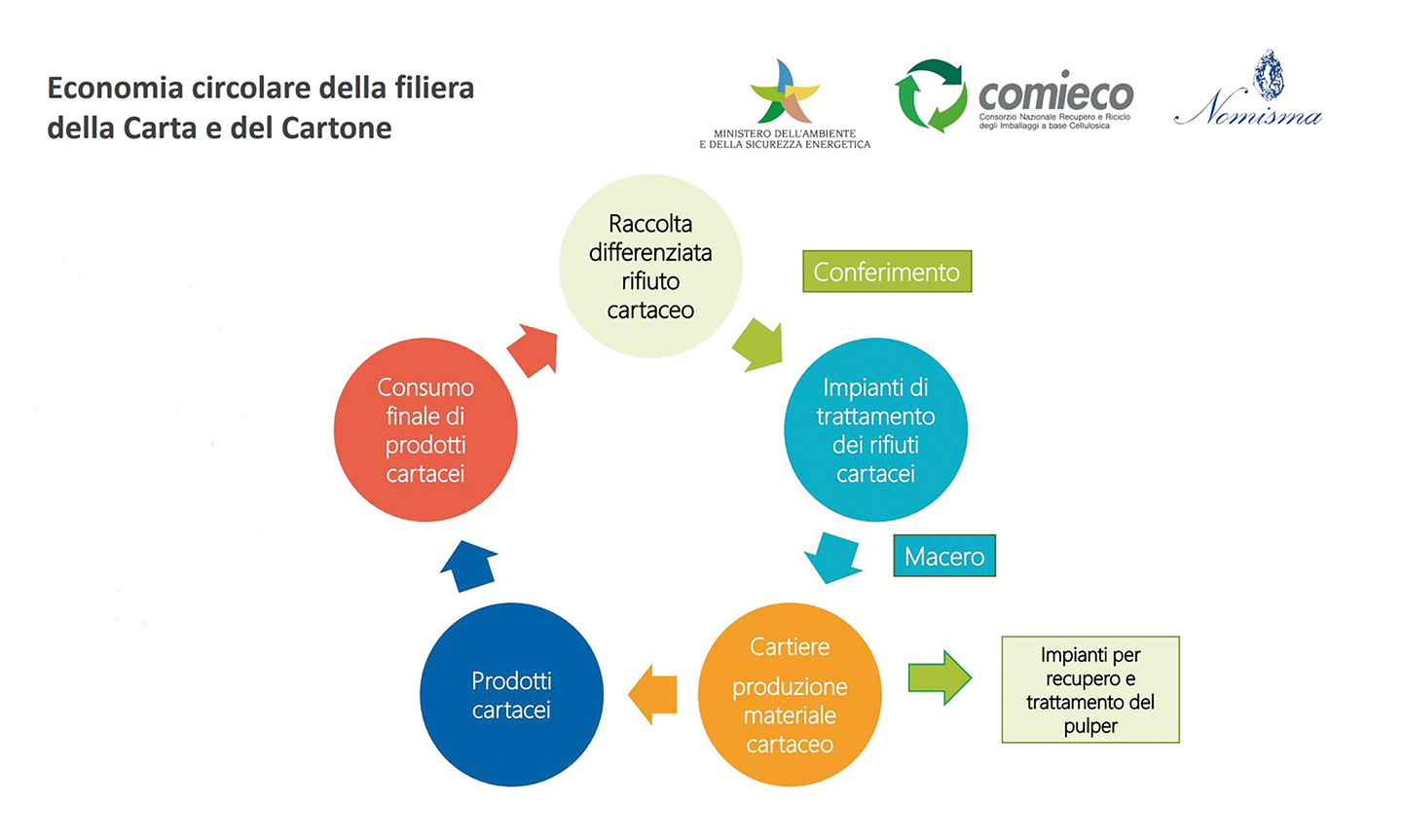
“Thanks to the synergy between public resources and private investments, the foundations are being laid to operate even better in the paper sector: more will be collected and recycled, jobs will be created and landfills will be avoided, achieving the recycling objectives of cellulosic packaging in advance, through adequate and innovative plants located throughout the national territory. This is the circular economy we want, capable of producing environmental, economic and social benefits”, concluded Hon. Mauro Rotelli, President of the VIII Commission for the Environment, Territory and Public Works of the Chamber of Deputies.







